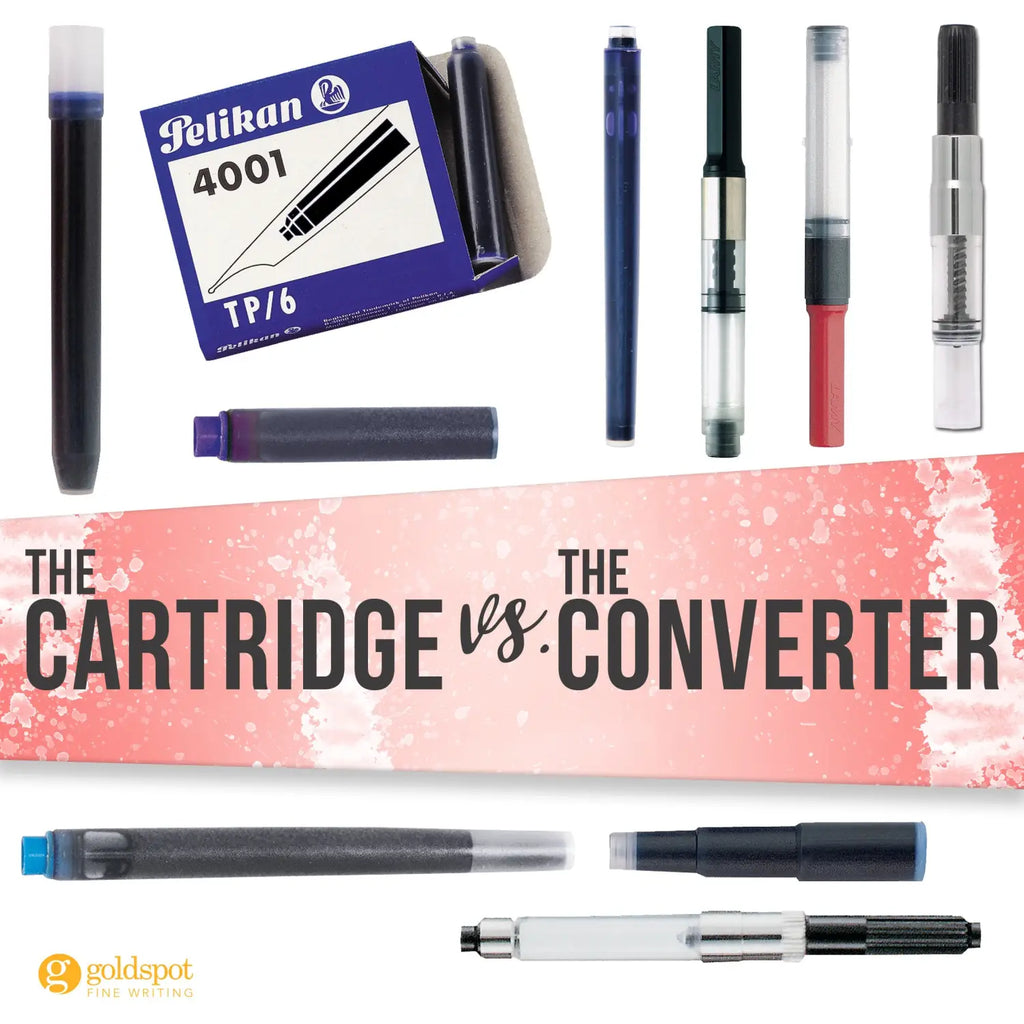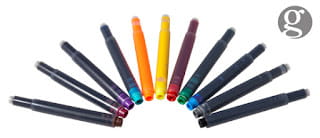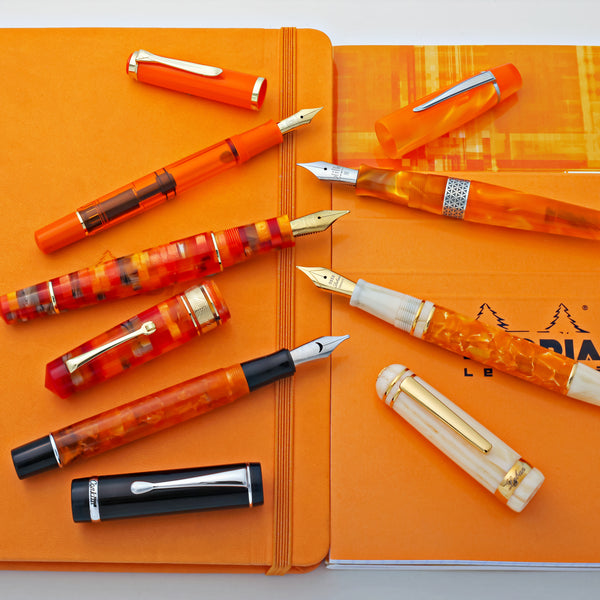The Cartridge Vs. The Converter
Many times you will hear of a fountain pen commonly offered with the cartridge/converter filling system. This means that the fountain pen can either accept disposable ink cartridges or use the refillable, screw-type converter that can draw ink from a bottle. My intention of this article is to pit the both of them in a bloody battle and see who would triumph gloriously. Whether you prefer the convenience of cartridges or the tradition of bottled ink, shop fountain pens that cater to your writing style and needs.

Just kidding, but I did want to discuss the advantages and disadvantages of using either method of filling your fountain pen. This information is especially useful for first-time fountain pen owners, so listen up. You don't want to get ink all over your nice sweater before Thanksgiving Dinner, or on the Turkey, for that matter.

Cartridges are, by far, the easiest between the two. They are fully supplied with ink, so when you pop that sucker into the front section of your fountain pen and hear the satisfying snap of the insert being pierced, you know you are moments away from writing the Great American Novel, or signing your expense reports, or writing a passive aggressive note for the noisy neighbor upstairs.
No mess filling your pen, but it does take a few moments to get that ink into the feed and to the point. To juice the process, I usually like to give the ink cartridge a gentle squeeze with my thumb and forefinger to get the ink down faster. Removal is as easy as taking out the empty cartridge and throwing it away.
The big negative with going the cartridge route of filling your fountain pen is that they are disposable, hurting the environment and your wallet at the same time. Buying box after box of cartridges isn't as cost effective as getting bottles of ink. Also, there hardly is as much of a color variety as there is with bottled ink. Most manufacturers will simply offer the blue, black and blue-black, while their selection of bottled inks will have every color "under the rainbow."

Converters are the modern compromise between the traditional bottle-filling systems of old with the industrialized notion of interchangeable parts. Without going into a whole historical tangent, the converter's purpose is to allow the user to fill their fountain pen in an old-fashioned way without having to worry about delicate pen repair down the road. You simply insert the converter in the same manner you would a cartridge. Seat it properly into the front section of the pen. Then, submerge the nib and feed into your bottle of fountain pen-friendly ink. Screw the black knob clockwise to draw ink up through the nib into the converter's ink chamber. Screw anti-(counter)clockwise to expel the contents (air, ink or water) out of the converter. This may take several twists up-and-down to get the proper suction, making sure all of the air is removed from the converter and that you are drawing up only ink. Filling via converter is a process that takes several tries to get a handle on it and novices are sure to get their fingers inky at first. Heck, I still get inky sometimes.
There are two main "draws" with a converter: one is the actual process itself. It may be nostalgic for some, while many also experience a sense of being deliberate and caring for your writing implement. With so many of our modern consumer items being disposable, it is a nice change-of-pace to actually take the time and fill your fountain pen, getting it ready to meet the day's tasks head-on! The second point is that it is more cost-effective to fill from an ink bottle than it is to continually buy cartridges. By the time you are buying package after package of disposable ink cartridges that last a few months, you could have had a whole collection of modestly priced ink bottles to last you a few years. There are online communities like Fountain Pen Network that encourage ink swapping or ink sampling, which would mean getting small 2 mL samples of different brands, hues and formulas of ink to find one that you really would love to get a bottle of.
The intimidating part of using the converter over a cartridge is the potentially messy process. The closest activity I can relate it to is changing the oil on your car. It is far more satisfying to do the job yourself, but you need to take time and get a little messy to accomplish. Taking the car to Lube 'N Go will be more expensive, but far less effort involved. If the oil came in different colors, which would change the colors of your exhaust, now we'd be much closer to the experience of filling a fountain pen.
Bottom Line - Most pen manufacturers offer both the converter and one ink cartridge with the purchase of a new fountain pen for the same reason that both Jiffy Lube and Advance Auto Parts are around. There are people who prefer to be more hands-on, while there are others who want to keep things simple. It really depends on the effort of the individual. Not that I'm saying people who use ink cartridges are lazy, they just would rather concentrate their daily efforts elsewhere. People who like filling their fountain pen with a converter want to invest themselves in their writing instrument and are willing to take the risk of getting ink on their hands because it is part of the charm, the very reason why they selected a fountain pen to write with in the first place.



